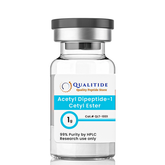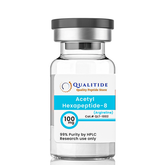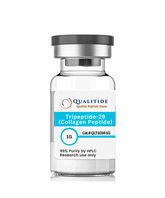Types of Cosmetic Peptides: Mechanism & Function
Whatever our skincare goals, most of us can agree on one thing: Healthy, vibrant-looking skin is always in. But when it comes to achieving the complexion of your dreams, it seems as if the beauty world is always trumpeting about yet another buzzy ingredient you “need.”
Peptides in skincare, while increasingly popular, have been around for years, and they’re the real deal when it comes to maintaining youthful skin. Peptides are composed of amino acids, the building blocks of proteins.
How do peptides work for skin?
The use of peptide serums can make skin look firmer by helping replenish some of the collagen and elastin (proteins in the skin) that we lose as we age as well as by repairing damage, hydrating, and enhancing overall appearance, says Karan Lal, D.O., a double-board-certified dermatologist with Affiliated Dermatology in Scottsdale, AZ.
But as you search for the right peptide serum or cream, you may encounter a wide array of scientific terms and ingredients, as different types of peptides have varying effects on the skin. While many products contain a combination of peptides, it’s helpful to know how these ingredients work so you can make the right choice for yourself.
Types of Cosmetic Peptides by Mechanism and Function
Signal peptides: For firmness
“These work by sending a message to the skin to stimulate production of collagen, elastin, and other proteins,” explains Marisa Garshick, M.D., a board-certified dermatologist at Manhattan Dermatology & Cosmetic Surgery in New York City. Dr. Lal suggests looking for products containing Matrixyl 3000, a peptide complex that he notes has the ability to boost collagen production. Other common signal peptides include palmitoyl tripeptide, palmitoyl tetrapeptide, and palmitoyl oligopeptide.
Neurotransmitter peptides: For smoothing
“These peptides block the release of chemicals that lead to muscle contraction. In this way, neurotransmitter peptides are thought to have a benefit for expression lines, similar to the effect of Botox,” says Dr. Garshick. One of those peptides is Argireline, which Dr. Lal says works well for softening wrinkles. Neurotransmitter peptides, commonly marketed as “Botox in a bottle,” are not as effective as the injectable alternatives but have been shown to noticeably improve fine lines, especially around the eyes.
Carrier peptides: For nourishing
These peptides help with wound healing and collagen production by delivering minerals, such as copper and magnesium, to skin, says Dr. Garshick. Like signal peptides, carrier peptides are excellent at improving skin firmness, repairing the skin barrier, and softening texture and wrinkles. “They’re thought to work by boosting collagen and elastin production, thereby improving skin texture,” says Dr. Garshick.
Growth factor peptides: For repair
“While growth factors exist naturally in the body, with age their levels decrease,” Dr. Garshick explains. “Important for wound healing, growth factors can help support collagen production and skin regeneration.” As they do a remarkable job at encouraging collagen production, they are often used in anti-aging and wrinkle-reducing products. If you see “oligopeptides” or “human-derived fibroblast media” on an ingredient list, you’ll know the product contains effective growth factors, says Dr. Lal.











